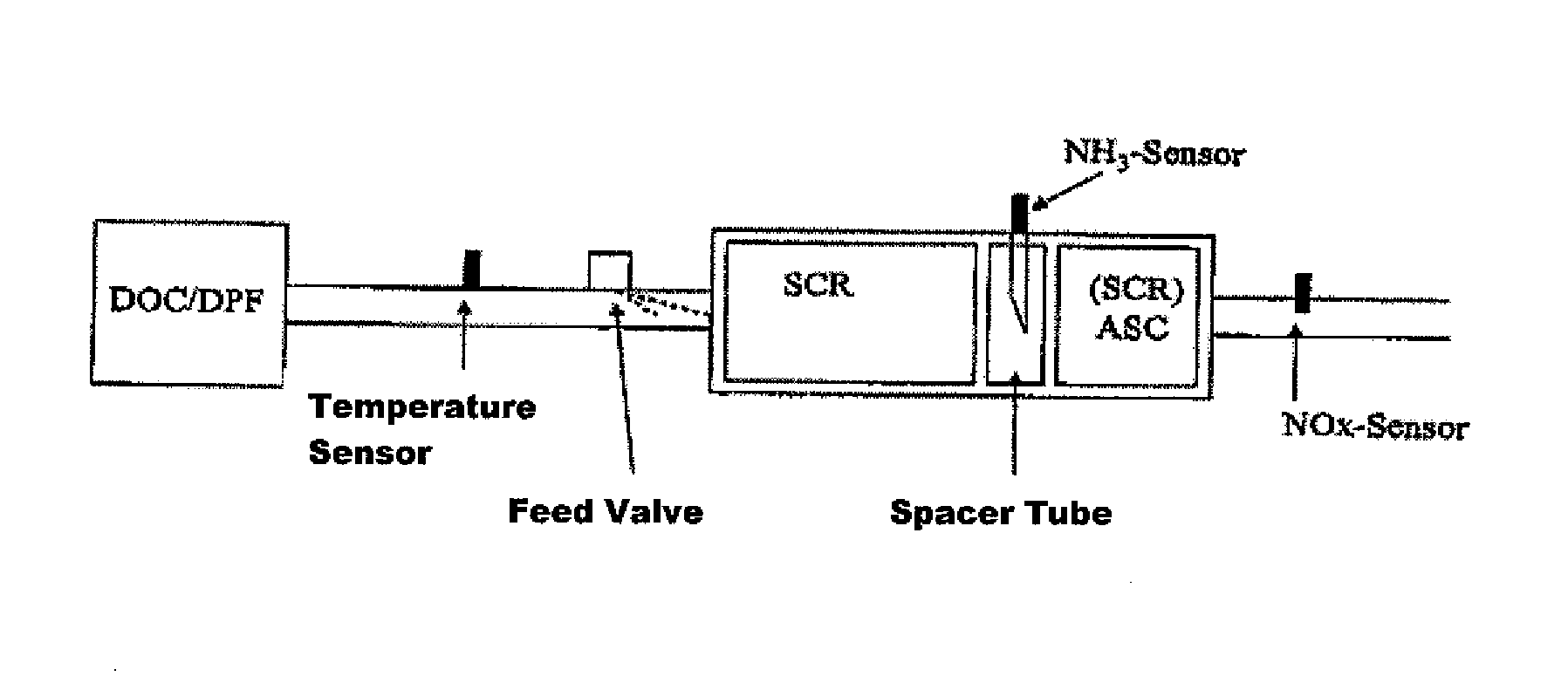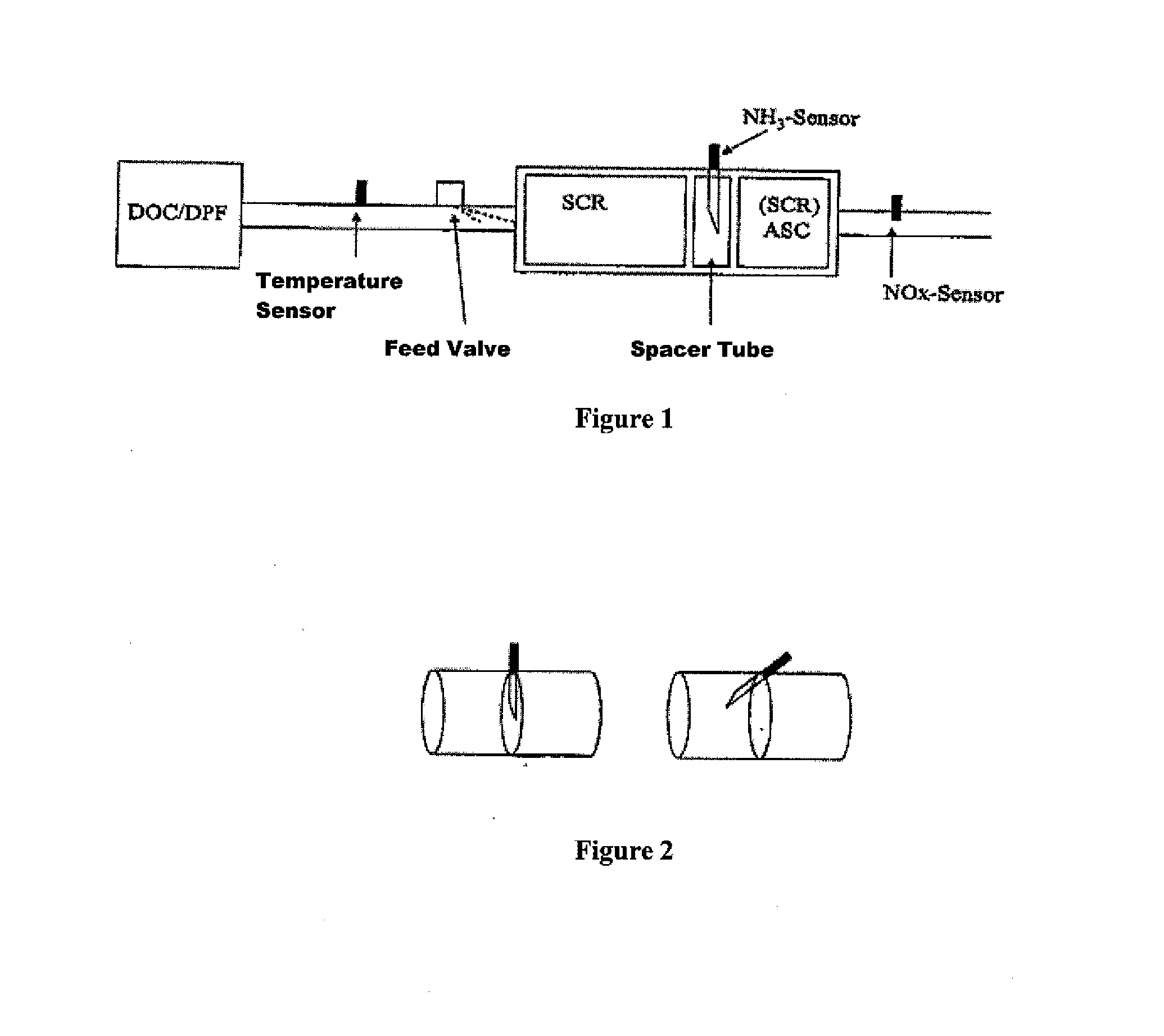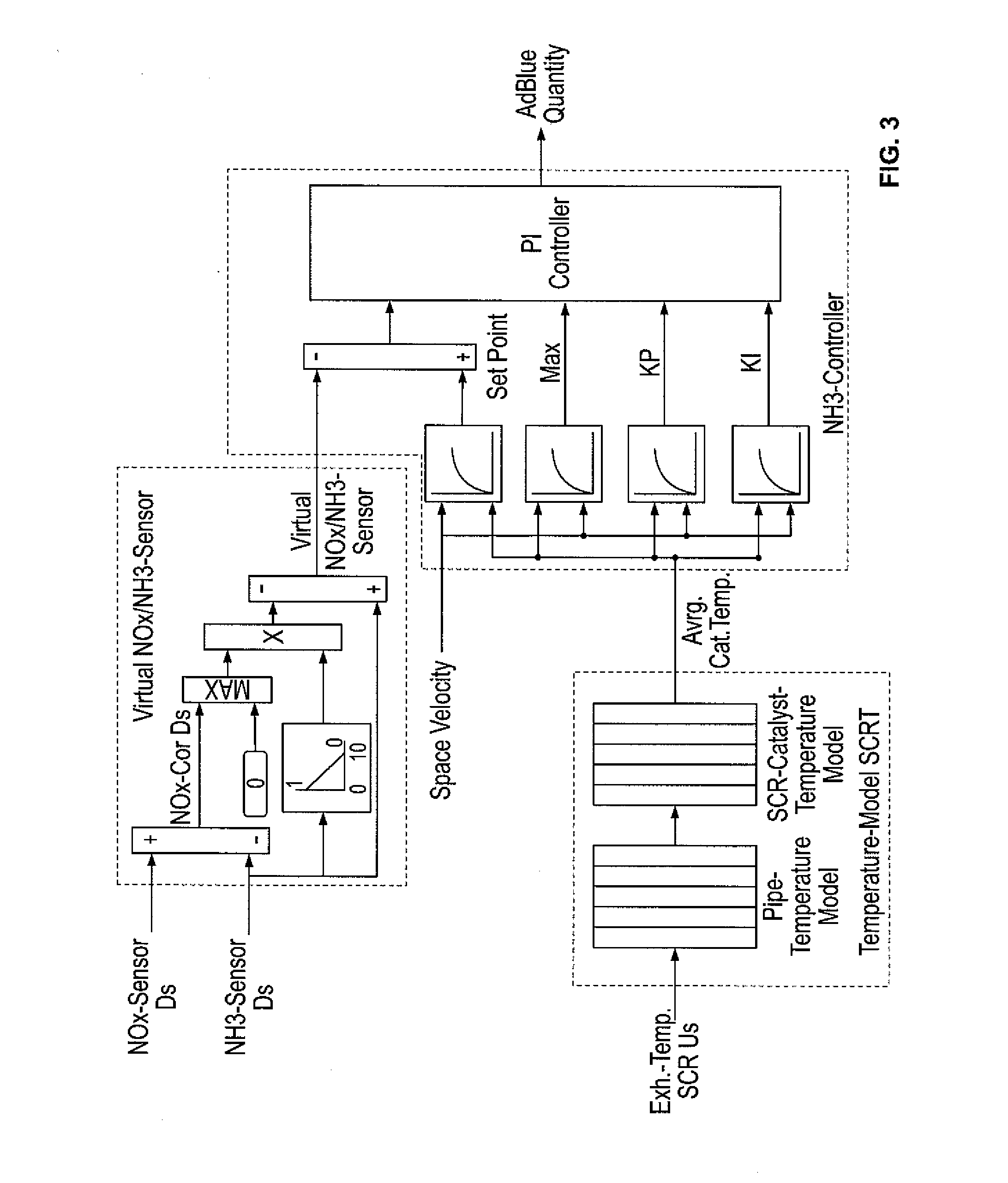Method for reducing nitrogen oxide levels in diesel engine exhaust gases
a technology of nitrogen oxide and diesel engine, which is applied in the direction of machines/engines, mechanical equipment, separation processes, etc., can solve the problems of difficult adaptation of pre-control models, difficult pre-control, and ammonia breakthroughs, and achieve the effect of reducing the nitrogen oxide level
- Summary
- Abstract
- Description
- Claims
- Application Information
AI Technical Summary
Benefits of technology
Problems solved by technology
Method used
Image
Examples
Embodiment Construction
[0033]FIG. 1 schematically shows the construction of an exhaust gas treatment system for carrying out the method according to an embodiment of the present invention.
[0034]The exhaust gas generated by the engine and to be cleaned might first go, via an upstream DOC and / or DPF and a mixing pipe, to a first SCR unit, which reduces the nitrogen oxides contained in the exhaust gas to be cleaned using ammonia from the aqueous urea solution (AdBlue®), and which is formed by one or more SCR catalytic converters. The exhaust gas temperature is measured with the aid of a suitable temperature sensor in the mixing pipe between the DOC / DPF and the first SCR unit. The feeding device for urea solution, used to feed a predetermined quantity of urea solution into the exhaust gas to be cleaned, is situated downstream from the temperature sensor. On the mixing tube, which includes the feeding device and, if necessary, static mixers for better homogenization of the exhaust gas to be cleaned and the red...
PUM
| Property | Measurement | Unit |
|---|---|---|
| Temperature | aaaaa | aaaaa |
| Concentration | aaaaa | aaaaa |
Abstract
Description
Claims
Application Information
 Login to View More
Login to View More - R&D
- Intellectual Property
- Life Sciences
- Materials
- Tech Scout
- Unparalleled Data Quality
- Higher Quality Content
- 60% Fewer Hallucinations
Browse by: Latest US Patents, China's latest patents, Technical Efficacy Thesaurus, Application Domain, Technology Topic, Popular Technical Reports.
© 2025 PatSnap. All rights reserved.Legal|Privacy policy|Modern Slavery Act Transparency Statement|Sitemap|About US| Contact US: help@patsnap.com



